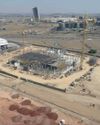Diversification often dissipates during extreme market events. Being able to identify assets that offer high diversification potential is therefore crucial.

In the previous section (see p.26) we discussed the use of rand-hedge SA-listed stocks to protect, diversify and hedge against rand weakness in relation to domestic equities as a South African investor’s predominant growth asset. We concluded that the merits of that investment case are far from conclusive and that each stock needs to be analysed on its own fundamental merits, as they behave idiosyncratically and not as one homogenous group according to the single driver of the rand exchange rate.
What of other asset classes, like offshore listed shares? Legae Peresec’s paper discusses diversification and the previous research they have carried out in this field. Among other observations, they point out that diversification seems to disappear exactly when one needs it most – in extreme or left tail events, such as stock market crashes, particularly those brought about by global events. In such circumstances, positive correlations of most assets tend to increase significantly. This behaviour is coined the “myth of diversification”.
In previous research by Legae, in 2013, they determined that the myth of diversification does indeed hold true for the majority of SA assets, with most assets displaying significant unattractive positive correlation asymmetry when paired against each other. Therefore, asset pairs generally became increasingly similar on the downside and increasingly different on the upside. Specifically, they found that local property and global equities provided poor forms of diversification for the local equities market.
Interestingly, the Resi-10 did provide attractive downside diversification.
However, there were some good diversifiers. Implied volatility, currency and interest rates (fixed income assets) showed negative or near-zero asymmetries in all given asset combinations. Local and global bond markets showed very high downside diversification potential.
Esta historia es de la edición 21 February 2019 de Finweek English.
Comience su prueba gratuita de Magzter GOLD de 7 días para acceder a miles de historias premium seleccionadas y a más de 9,000 revistas y periódicos.
Ya eres suscriptor ? Conectar
Esta historia es de la edición 21 February 2019 de Finweek English.
Comience su prueba gratuita de Magzter GOLD de 7 días para acceder a miles de historias premium seleccionadas y a más de 9,000 revistas y periódicos.
Ya eres suscriptor? Conectar

THE HEALTH OF SA'S MEDICAL SCHEMES
As the Covid-19 pandemic abates, finweek takes a look at the financial performance of some of the largest players.

The effect of Gilbertson's departure
With Ntsimbintle Holdings now the major shareholder of Jupiter Mines, it could change SA’s manganese industry.

Making money from music
Why investors are increasingly drawn to the music industry.

Conviction is key
Sandy Rheeder plays a critical role in Mukuru’s mission to open up financial services to the emerging consumer market in Africa through tailor-made technology solutions and platforms.

The post-pandemic toolkit
How CFOs can use technology to support growth.

Big city living exodus
Mini cities like Waterfall City and Steyn City are redefining city-style apartment living.

Big compact, big value
Handsome, with a hefty level of standard specification, the roomy Haval Jolion compact crossover is a great value proposition.

On barriers to entry
There are various ways in which a company or sector can achieve competitive dominance. They usually make for good investments.

Fear and greed in one index
To buck the trend, when markets are hot or cold, is a tough thing to do. However, it can deliver solid returns.

Africa's largest data centre facility coming soon
Vantage Data Centers plans to invest over R15bn for its first African data centre facility in Attacq’s Waterfall City.